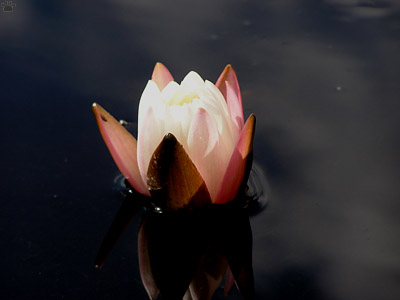
American white water-lily (Nymphaea odorata), Everglades Wildlife Management Area. |
Florida, part 5: Plants of water and air
Florida is as an extremely flat country, partially flooded even during the dry season, so it's not surprising that it has a lot of beautiful aquatic plants. In summer, its lakes and slow rivers are covered with blooming water-lilies.
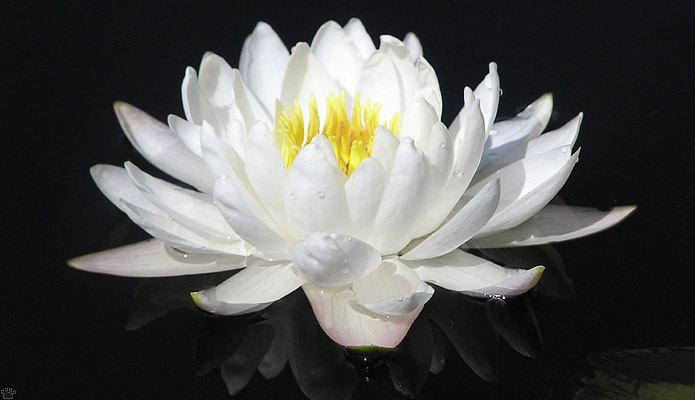
American white water-lily, Arthur R. Marshall Loxahatchee National Wildlife Refuge. |
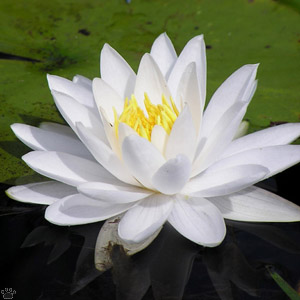
American white water-lily, ARMLNWR. |
American white water- lily is by far the most common. Mexican water-lily, once abundant in large lakes, was largely replaced by introduced water- hyacinth. |
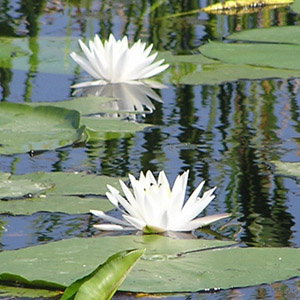
American white water-lilies, ARMLNWR. |
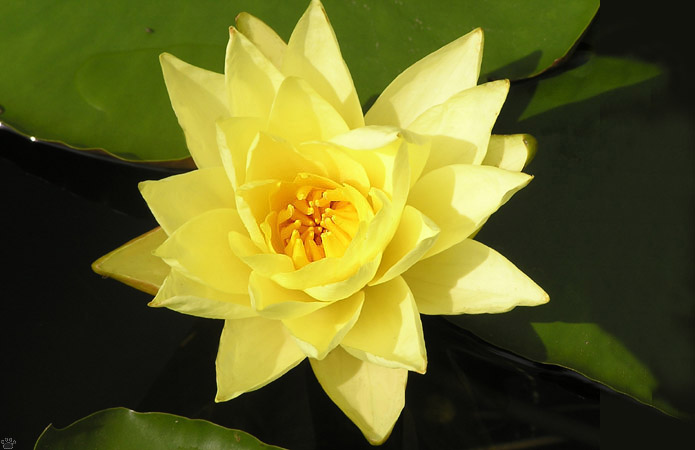
Mexican water-lily (N. mexicana), Lake Okeechobee. |
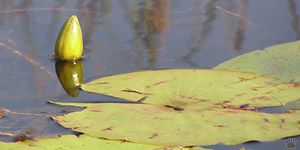
. |
In addition to the two large species, Florida has two species of small water- lilies (below). They grow in permanently flooded forests, shaded woodland streams, and ponds dug up by alligators. They can be difficult to find, especially one species that opens its flowers at night. |
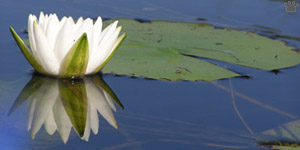
. |
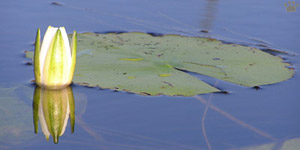
. |
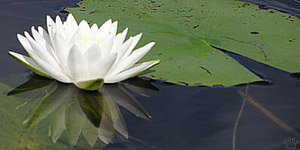
. |
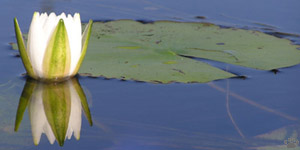
American white water-lily, ARMLNWR. |
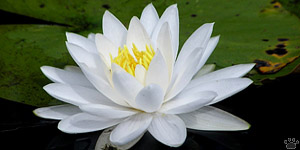
American white water-lily, ARMLNWR. |
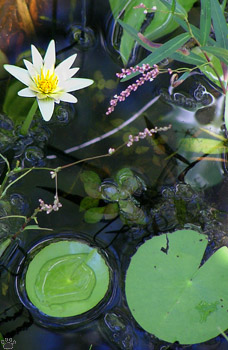 |
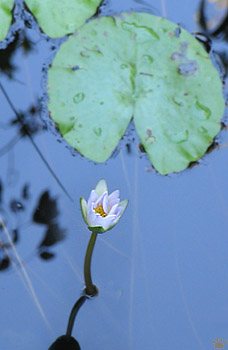 |
 |
| Creamy (Nymphaea blanda, left) and tropical royalblue (N. elegans) waterlilies. Fakahatchee Strand Preserve State Park. |
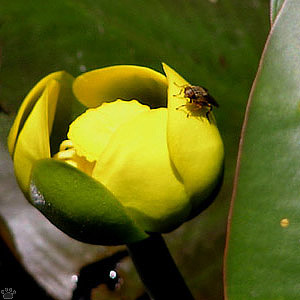
American pond-lily (Nuphar advena), ENP. |
Pond-lily is even more common. It grows in almost every lake from the Everglades to southern Canada. It has edible seeds and root, but in some plants the root tastes bitter. |
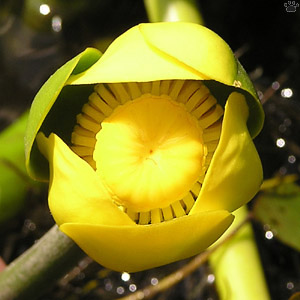
American pond-lily, ENP. |
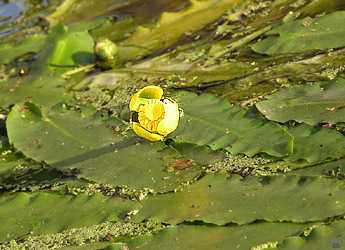
Narrowleaf pond-lily (N. sagittifolia), Tiger Island. |

American pond-lily, ENP. |
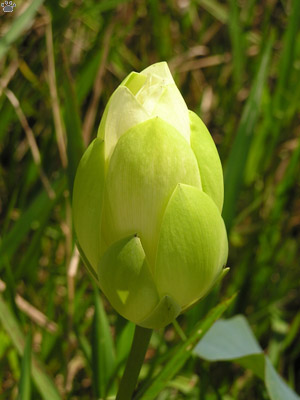
American lotus (Nelumbo lutea), Paynes Prairie State Preserve. |
American lotus is a close relative of the sacred lotus of Asia. It is a subtropical species, and doesn't normally grow in southern Florida, but it is very common in the north. It can survive almost complete flooding, as well as drying of the lakes it grows in. |
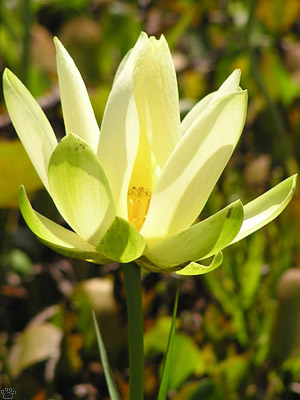
American lotus, PPSP. |
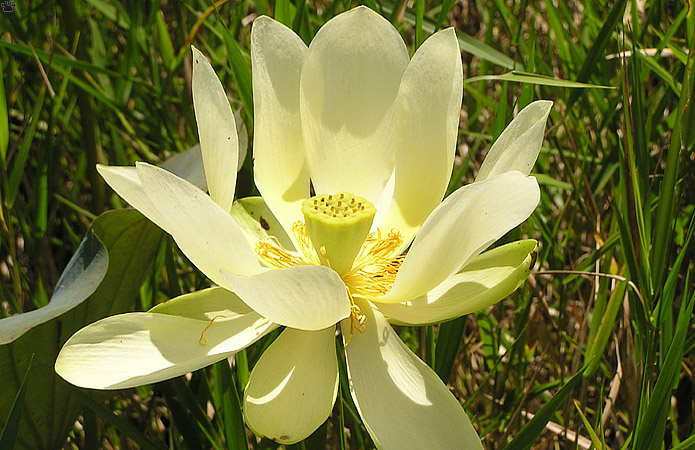
American lotus, PPSP. |
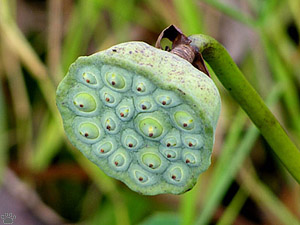
American lotus, PPSP. |
Its seeds are less tasty than seeds of the sacred lotus, but the roots are edible if cooked thoroughly. It blooms in late spring and summer. |
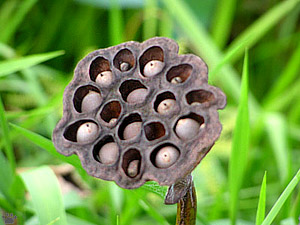
American lotus, PPSP. |
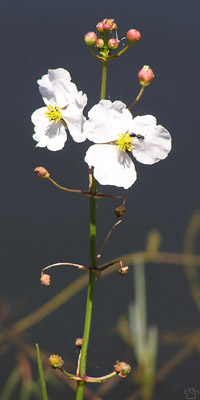
Grassy arrowhead (Sagittaria graminea), ENP. |
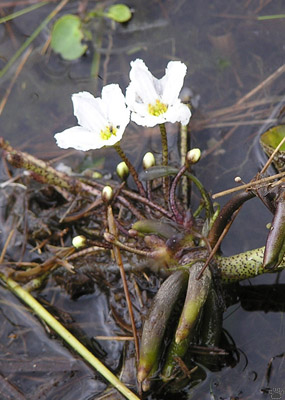
Big floatingheart (Nymphoides aquatica), Lake Apopka. |
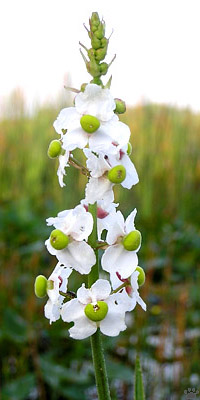
Bulltongue arrowhead (S. lancifolia), ENP. |

Common water-hyacinth (Eichhornia crassipes), ARMLNWR. |
The most infamous water plant of Florida is water-hyacinth. Introduced from South America in 1884, it almost destroyed native freshwater flora and fauna. Controlling it still costs a lot of money every year. A few local species, such as manatees, sirens, and aquatic snakes, now use this plant for food or shelter. |
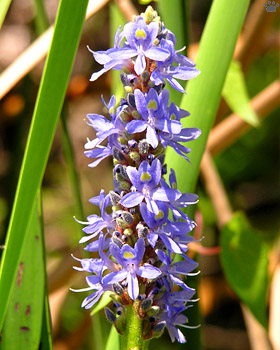
Pickerelweed (Pontederia cordata), Lake Istolpoga. |
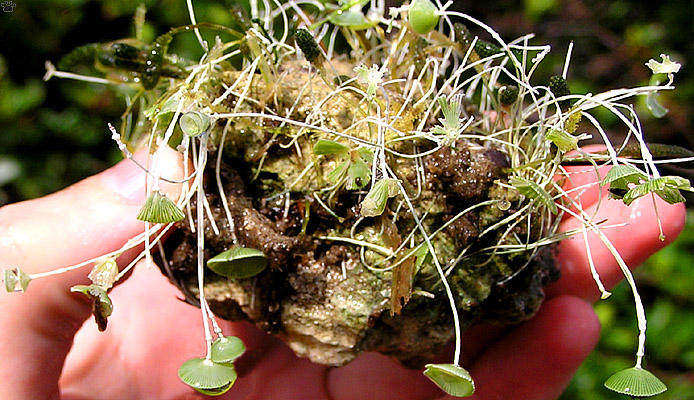
Coastal green algae called Acetabularia is one of the largest single-cell organisms. Cayo Costa State Park. |
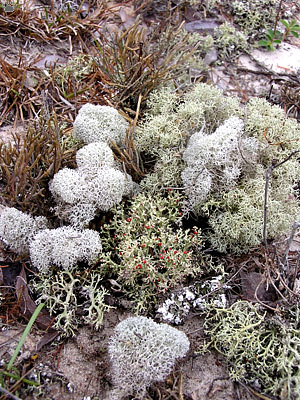
Lichens of sand scrub, Itchetucknee Springs State Park. |
Florida's climate is warm and humid, even in dry winter months. It allows some plants and lichens to grow very well without soil, just by obtaining moisture and nutrients from the air. Lichens are most plentiful in sandy areas. |
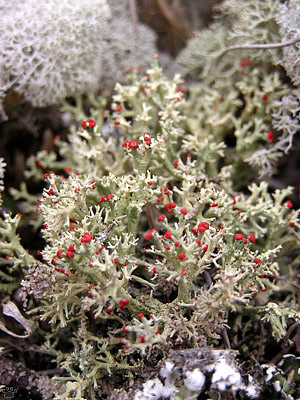
Cladonia lichens of sand scrub, ISSP. |
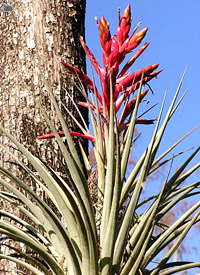
Leatherleaf airplant (T. variabilis), ARMLNWR. |
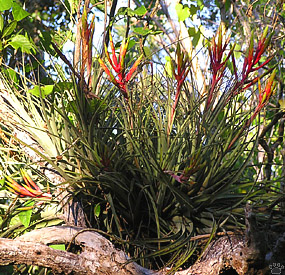
Cardinal airplant (Tillandsia fasciculata), ARMLNWR. |
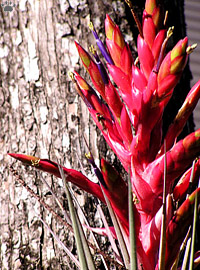
Leatherleaf airplant, ARMLNWR. |
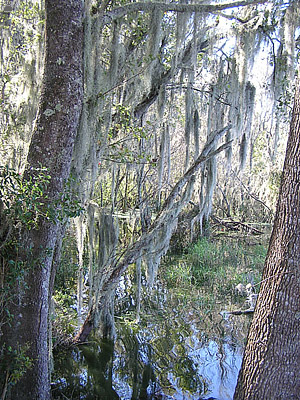
Spanish moss (T. usneoides), Withlacoochee State Forest. |
Florida has a lot of epyphites, especially airplants of genus Tillandsia. The most common is Spanish moss (not really a moss, but a flowering plant) - it can be seen growing on city trees and utility wires. Sometimes it's very beautiful. |
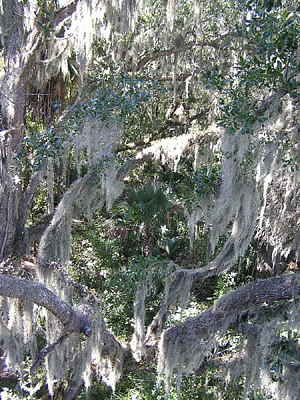
Spanish moss, WSF. |
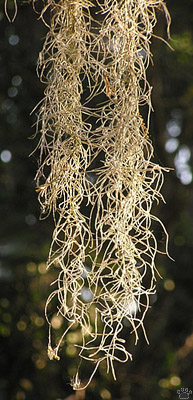
Spanish moss plant, Coral Gables. |
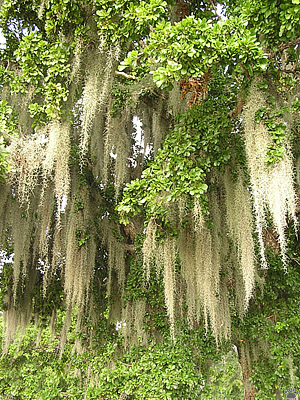
Spanish moss, Lower Suwannee National Wildlife Refuge. |
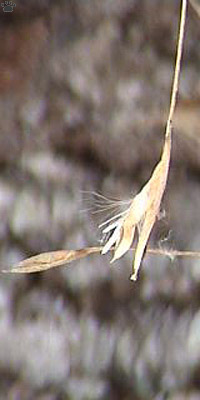
Spanish moss flowers, Coral Gables. |
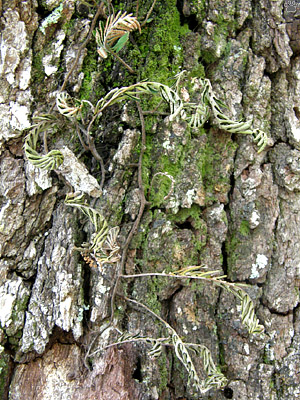
Resurrection fern (Polypodium polypodioides), CG. |
Resurrection fern is one of the commonest epiphytes in Florida, it covers branches of many old trees. During the dry season, it looks almost dead. But after a rain it immediately turns all lush and green. |
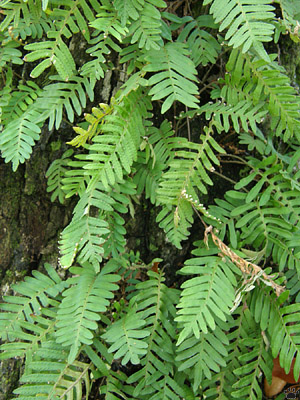
The same fern after 30 minutes of rain, CG. |
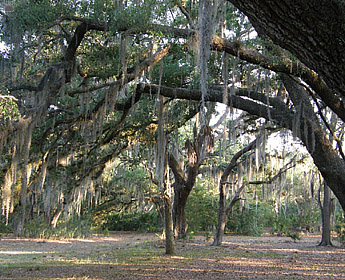
Spanish moss, Ocala National Forest. |
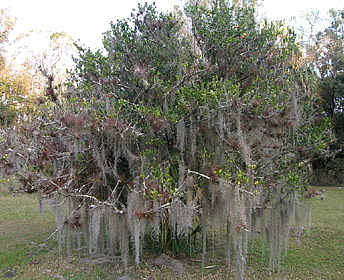
Spanish moss, Highlands Hammock State Park. |
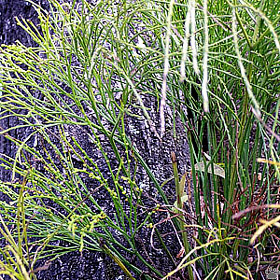
Whisk fern (Psilotum nudum), CG. |
Whisk ferns are unusual epiphytes. They lack leaves and roots, and were once considered the sole surviving relatives of long- extinct primitive plants called psilophytes. But recent genetic evidence shows them to be just aberrant ferns, not true "living fossils." |
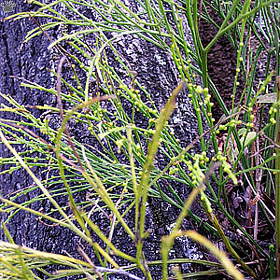
Whisk fern, CG. |
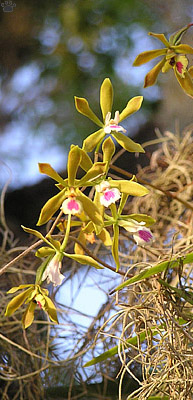
Florida butterfly orchid, ENP. |
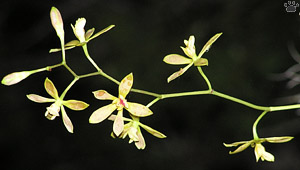
Florida butterfly orchid (Encyclia tampensis), ENP.
Hidden among Spanish moss and other epiphytes are some of Florida's precious native orchids. There are only a few arboreal species here, and all of them are very difficult to find. Most of them bloom in summer, during the rainy season. Some species are only known from one or two locations. These places are kept secret by the National Park Service to prevent destruction of the remaining plants by private collectors. |
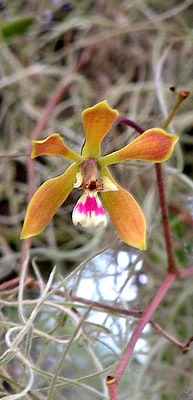
Florida butterfly orchid, ENP. |
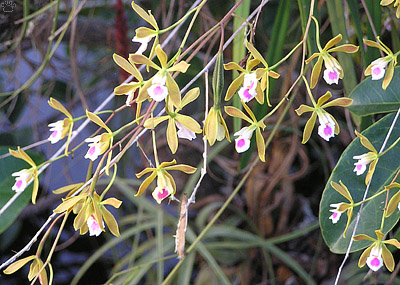
Florida butterfly orchid, ENP. |
Part 6. Wildflowers
Back to Part 4
Home
|
















































